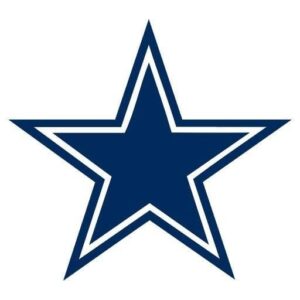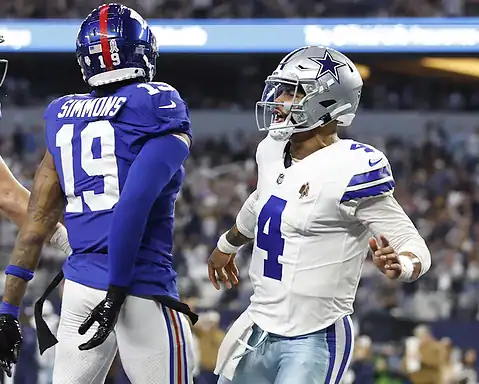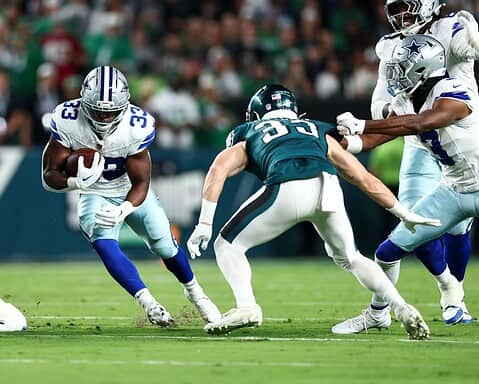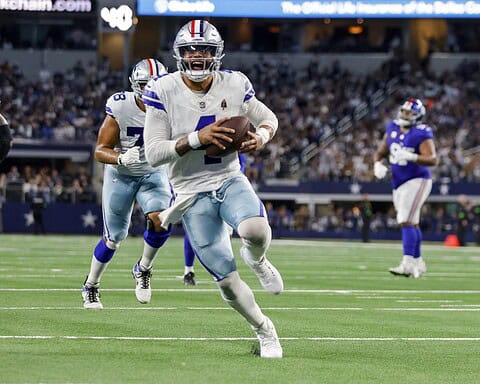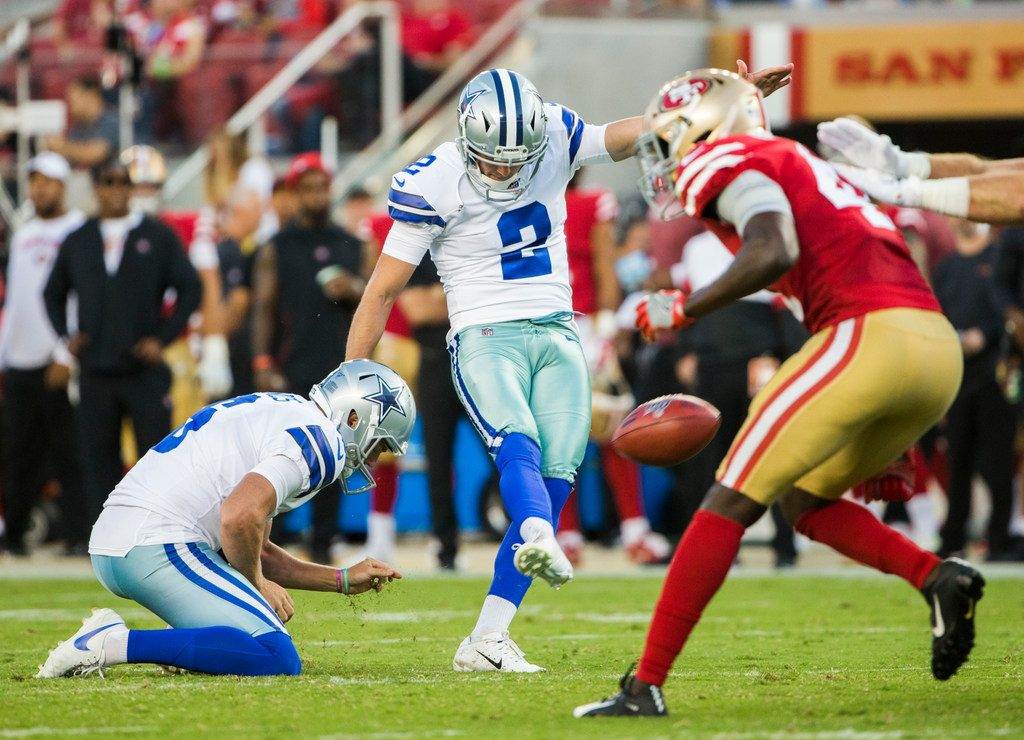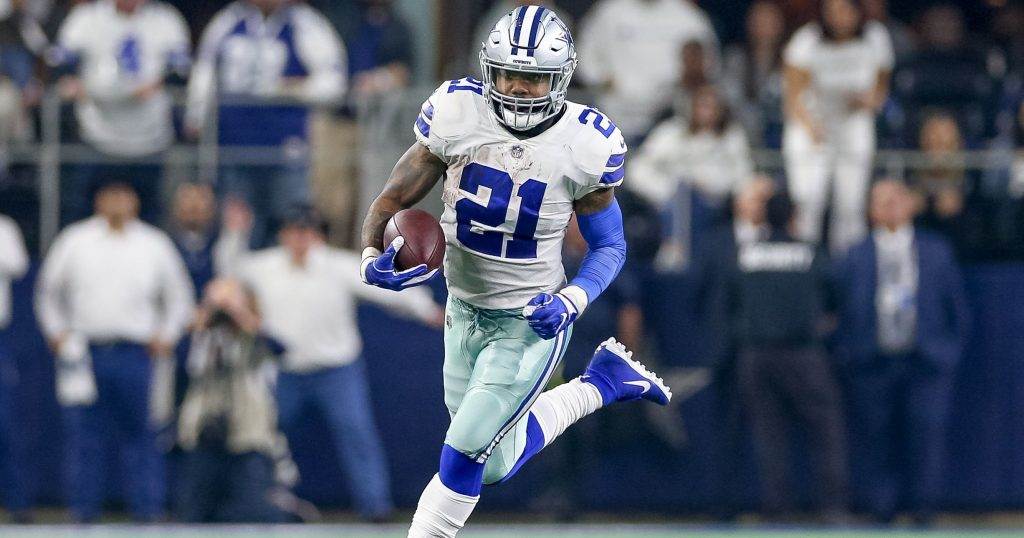$40 million!
The number took the football world by surprise, and left most fans and analysts across the league shaking their heads. Dak Prescott? $40 million?
Of course, the same people who would yell at the Cowboys for extending Prescott at such a number will also laugh at the Cowboys for extending their running back and paying him big money for his position. But that’s enough about that.
The fact of the matter is Dak Prescott has earned the right to be paid. He’s earned his contract extension through his play, and as a quarterback when it’s your turn to get paid, the total yearly value is going to look ridiculous.
Whether or not Prescott has “earned” this deal is still debated across fanbases, however. Some believe he’s been carried, others believe his skill players and offensive play caller have held him back. Some say he can be a top 10 quarterback, others believe he’s “trash.”
Let’s settle the debate, or at least attempt to, by taking a deep dive into some of the most important numbers when determining a quarterback’s production.
Prescott’s Accuracy
It’s almost become accepted as fact that Dak is an inaccurate quarterback, but the numbers suggest a very different story. Completion percentage on its own is a very poor judge of accuracy, but Next Gen Stats’ “completion percentage over expected (CPOE),” is a much more robust metric. Completion probability is calculated on each throw, and depends on a variety of factors such as the depth of target, where the receiver is on the field, separation, time to throw, and much more.
CPOE measures the difference between a quarterback’s expected completion percentage and their actual completion percentage. In short, the higher the number, the more accurate that quarterback tends to be because he is outperforming his expectations.
Prescott had a CPOE of +2.1 in 2019, tied for 9th among quarterbacks with a minimum of 200 attempts. This means that he was 2.1 percentage points better than he was expected to be in terms of completion percentage.
Dak and Dunk?
Another major narrative against the Cowboys quarterback is that he is a dink and dunk passer. The argument says that Prescott dumps the ball off too often, and is risk averse to a fault in the passing game.
Next Gen Stats has a metric called Aggressiveness Percentage, which measures the percentage of passing attempts into tight windows over total number of attempts. Prescott’s AGG% was 17.7%, tied for 7th in the league among quarterbacks with a minimum 200 attempts.
Now, this doesn’t necessarily mean that Dak is the 7th most aggressive quarterback in the league. His high percentage of throws to receivers with less than 1 yard of separation could have more to do with lack of offensive creativity and lack of speed at receiver than Prescott taking a ton of chances.
Our friend Cowboys Stats on Twitter has spoke a lot about this narrative as well, though, and dispelled it with this excellent chart linked below.
As you can see, Prescott is no more likely to dump the ball off than the league average since 2015. The X axis is depth of target, and the Y axis is total share of passes. So shoutout to Cowboys Stats for this awesome chart to show how little validity the “Dak and Dunk” narrative really has.
Why else is Dak good, Kevin?
I’m glad you asked!
While remaining as aggressive in the passing game as anyone else, Prescott turns the ball over much less. His interception percentage was just 1.5%, tied for 4th among all quarterbacks last year. While he did have a weird fumbling spurt at the beginning of 2018, Prescott has never been someone who throws a lot of picks. And, you guessed it, that’s good.
Prescott’s value is also measured through Expected Points Added. Expected Points uses the down, distance, and field position to estimate a team’s expected net point advantage. Simply put, how many points is this team expected to score considering their circumstances.
EPA is the difference between expected points at the beginning of the play and end of the play, defined by Brian Burke as a play’s impact on the score of the game.
Prescott had a total EPA of 71.7 in 2018, 12th among all quarterbacks. He was also 6th in rushing EPA by QBs, further emphasizing how important his quarterback runs are. Lastly, Dak finished 8th in EPA on non-zero value added QB-plays (most plays that are not handoffs).
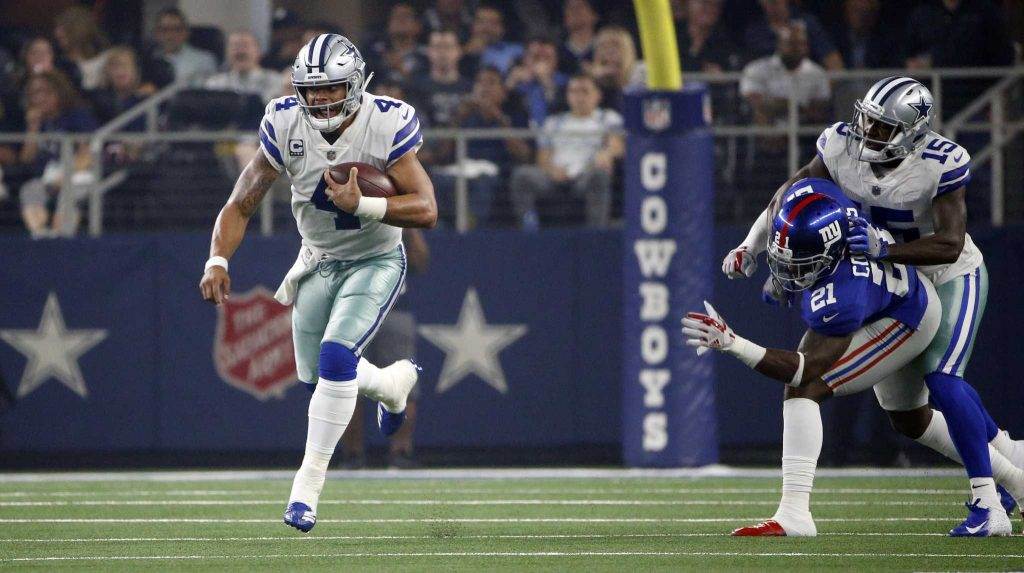
Now, while I certainly sit in the “Dak is good” camp, he does have room for improvement. Passing efficiency leaders tend to be stable year over year, whereas something like team defense is highly variable. But, Prescott can make some key improvements going forward.
Prescott had a sack percentage of 9.6% in 2018, 28th in the league. This high percentage comes while being 10th in time to throw, indicating that Prescott needs to make decisions quicker. As you might expect, most of top 10 are guys who like to extend plays and get out of the pocket, but Dak does hold onto the ball too long and take too many sacks.
Prescott also was below average in two important efficiency stats in 2018. Dak finished 19th in ANY/A at 6.22 yards, though most of the Cowboys faithful hope to see this number grow with a changed offensive philosophy under Kellen Moore. Dallas’ passing offense also finished 26th in DVOA, which is downright bad. Though, the acquisition of Amari Cooper certainly helped things quickly for the Cowboys in the second half of the season.
Dak Prescott is a good quarterback. Does he have flaws? Of course. Is he an elite, Patrick Mahomes level player? No, he’s not. But it’s his turn to get paid and he is worthy of the contract he’s about to receive.
Don’t let Philadelphia fans tell you differently.

